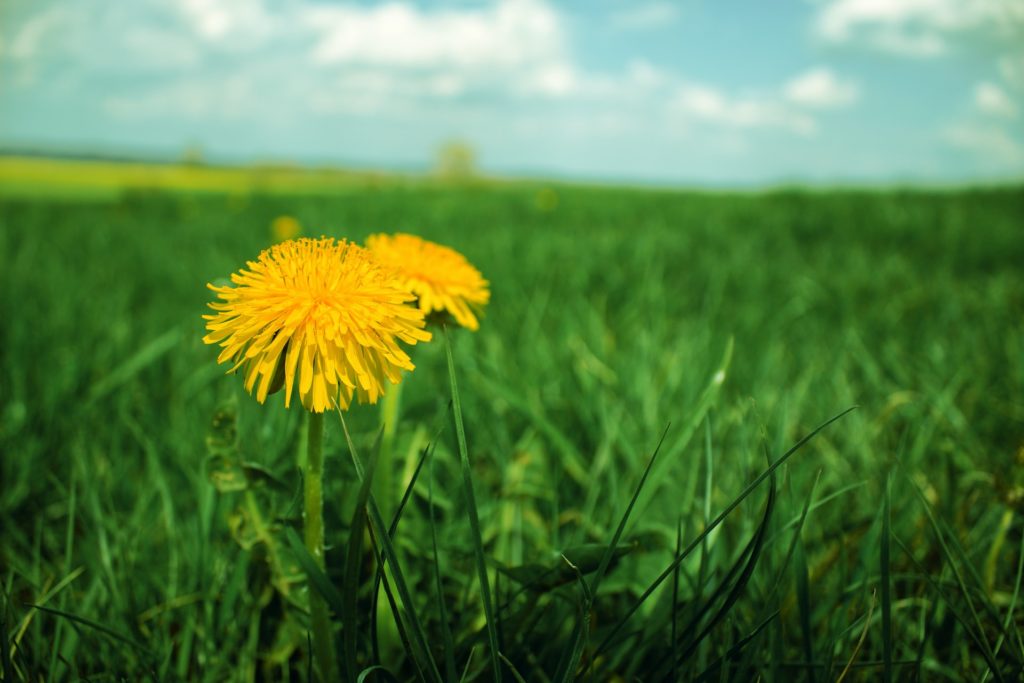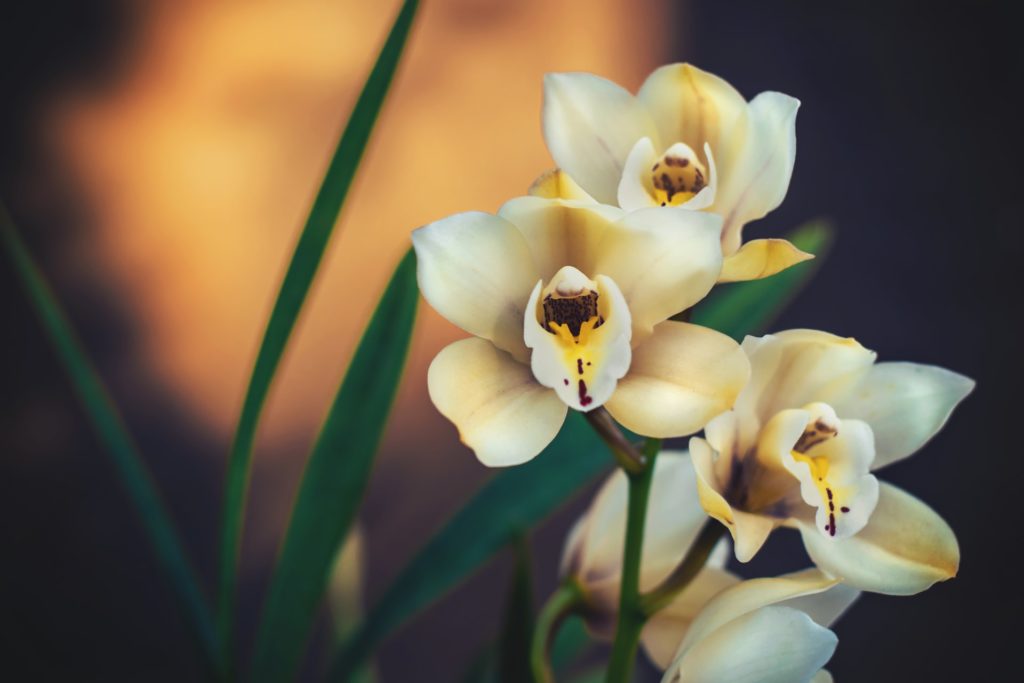Nature and Nurture: An Ethic of Flourishing
One of the oldest arguments of human development is the one of nature versus nurture. The debate questions how much of what we are born with can determine our adaptability in the world. The Swedish idioms of the “dandelion child,” maskrosbarn, and the “orchid child,” orkidebarn, insinuate that a child’s emotional sensitivity and resilience are inborn traits (Ellis and Boyce 2008). But the reality is, each plant, and each child, has different needs. What a plant or a person can do is strive best to flourish in the conditions given to them.
This post is an excerpt, with edits, from Chapter 5 of my PhD Dissertation “Nature, Self, and Being in the World.”
Dandelions and orchids
Building on the metaphors, the Dandelion and Orchid Hypothesis is used by psychologist Bruce Ellis and developmental pediatrician Thomas Boyce to explain the serotonin transporter gene that controls emotional environmental sensitivity (Jawer 2012; Ellis and Boyce 2008).
Children with the shorter gene, which has less transporters and more serotonin, are categorized as orchids. They are more emotionally sensitive, react to environmental stress easier, and need a supportive environment to flourish.
Children with the longer gene, which has more transporters and less serotonin, are considered dandelions. These children are less stimulated by their environments and are able to thrive in a variety of conditions. About four-fifths of children tested in Ellis and Boyce’s studies have dandelion qualities (Fenn 2019).
While the use of the dandelion and orchid metaphor to explain nature and nurture in human development can be appealing in its simplicity and clarity, upon further contemplation of the cultural connotations of the flowers, the metaphor becomes problematic.

Cultural narratives of not belonging
Without Ellis and Boyce’s (2008) “Biological Sensitivity to Context” narrative, the idioms of the dandelion and the orchid child have the feel of a Brothers Grimm fairy-tale or a Mother Goose nursery rhyme. The stories are seemingly innocent, yet they have hidden disturbing qualities.
The troubling narrative of the dandelion and orchid metaphor is that both flowers have strong cultural connotations. Seen as the antagonist of a well-maintained lawn, the dandelion is resilient but is also considered an undesired weed. In comparison, the orchid is cherished as the exotic houseplant, an exquisite beauty that is prized even more because of its delicateness.
If I were to solely categorize myself in terms of Ellis and Boyce’s theory on emotional sensitivity, I would consider myself as an orchid child; my parents would undoubtedly agree. But being emotionally sensitive as a child within a world of resilient dandelions does not make an orchid child feel exquisite or prized. Rather, an orchid child would feel that they do not belong in this world. Ellis and Boyce recognise these feelings of insecurity in their theory and depend on them to argue for more nurturing environments for orchid children.
But alternatively, 80% of children are considered dandelions. On one hand, they are labelled as strong and adaptable, but on the other hand, they are unwanted weeds in a garden. So, who would want to be a dandelion?
Therefore, in the grand scheme of the metaphors, can either orchids or dandelions feel that they belong?
When cultural narratives go the wrong way, that is, they are destructive to notions of self and notions of nature, they bring with them hidden complications.

Living things flourish…including humans
In reality, both flowers live because of distinct habits of light, temperature, moisture, soil and proximity to and from other flora and fauna, including humans.
As vigorous as the dandelion may be, it does not grow where many orchids thrive. Dandelions also have medicinal qualities and have been traditionally used as a beneficial herb. Conversely, orchids are not rare—a family composing of over 22,000 species is comparable only to the Aster family, home of the dandelion genus Taraxacum.
Rather than being stuck with the narrative that the dandelion is more naturally adaptive, and the orchid is more culturally dependent, the reality is that the biological nature of each plant shapes how either responds to its environment. Each plant has different needs, but still tries its best to flourish in the conditions given to it.
An adult is conditioned to pass judgement on the flowers, but rarely do children have this issue. Collecting bouquets of dandelions and blowing at their fluffy seeds are delightful to children because they experience the intrinsic beauty of the flowers.
The word flourish means to blossom or to grow. A flourishing plant grows to its utmost potential. More than a metaphor, a human being, as a natural growing organism also flourishes.
A flourishing plant can metaphorically be called a happy plant, but it does not think about being happy. It just grows. If asked what a person ultimately wants with life, most people would say they just want “to be happy.” However, being happy for most people is a fleeting state, often dependent on the attainment of something external such as wealth, particular relationships, recognition, or pleasure.
If happiness were to be based only on good fortune and happenstance, as defined by the etymology of the word happy, but if happiness was also meant to be life’s greatest purpose, then happiness becomes a paradox: happiness can never be a universal human goal that can be achieved because of the limitations of external circumstances.
In pursuit of personal and social flourishing
Often translated as happiness, Aristotle’s (1835) eudaimonia has also been argued to be a term to describe the state of human flourishing or well-being (Moore 2019). Therefore, eudaimonia or flourishing is a more fitting way to describe human being’s ultimate goal towards happiness.
Eudaimonia is the pursuit of the ultimate “good life.” It is not a means to achieve something else. Therefore, the “good” is achieved through the act of living. Since eu means well and daimon means spirit (i.e., the soul in relation to a divine counterpart), eudaimonia is to live well in accordance to one’s soul (Kraut 2018). A plant does not strive to be happy (or to be healthy, for that matter); it just strives to flourish as it is meant to despite the conditions it is given.
Much of a person’s life is focused on their career. Therefore, the career process is part of living well or a pursuit of eudaimonia. When given the means, people usually choose careers based on their interests and aspirations. Therefore, the choice to do work that aligns with a personal sense of fulfilment is also a choice to flourish.
While landscape architecture is a career that provides a sense of fulfillment for many people who choose the profession, I also consider the landscape architect as a modern archetype for someone who navigates the complexities of the social and ecological world through a relationship with landscapes.
While this ideal archetype makes perfect ethical choices, a real human or a real landscape architect is constrained by personal and collective mental patterns, behaviours, and traditions. Environmental ethics, which is foundational to landscape architects’ self-description as “stewards of the land,” is not exempt from mental inconsistencies.
The problem of environmental ethics
The inconsistencies in how we deal with environmental matters stem from how conventional ethics is practiced as a binary judgement of good and bad actions. In order to make these judgements, a conceptual hierarchy needs to be made by establishing opposing “ethical advocates” and “ethical delinquents.”
But if ethical advocates are fighting for equality within a social or ecological system, is it not an oxymoron for them to be ethically superior to another human being?
Therefore, to really fight for justice and equality, for people and for nature, we need to envision an ethics that moves beyond binary and hierarchical thinking.
Environmentalists often argue for non-anthropocentricism as an ethical obligation. But ironically, the history of ethics in practice is often based on a person or a group’s presumption to self-impose a license to assign value or extend moral standing to those who have wrestled with demonstrating value, be it another race, gender, species, or habitat.
So in effect, whether a forest is considered to have intrinsic or instrumental value, the value is still a judgement made by the human ego. Accordingly, the problem of environmental ethics is not that it is too anthropocentric, but rather anthropocentric in a faulty way. As ecofeminist Chris Cuomo (1998) states,
only humans use ethics as we know them, and ethics have to be based on human-generated valuations and responses. […] Indeed, we cannot truly separate human from nonhuman well-being without dramatically changing our conception of human physical, emotional, and social well-being, and the false belief that we can separate these has severely disrupted the physical thriving of both humans and nature. (49)
Arguing that we should be less human-focussed in order to be better human beings is, therefore, ineffective as an ethical premise. Making ethical choices as a human being first starts at considering what it means to be human in the world.
Acknowledging humanity’s connectedness to the rest of the world is a survival issue, a social issue, an ecological issue, and an existential issue. All these issues create circumstances for ethical choices. At the root of environmental ethics is the need for a different worldview than one that sees humans as separate and not belonging to the collective entities in the world.

Flourishing as an ethic is about making choices
Radical movements in environmental ethics since the 1970s suggest that solutions to our environmental crisis are not found in moral obligations but rather in the need to shift cultural ideologies.
The father of “deep ecology”, Arne Næss (2005) argued for a new worldview that would encompass the value of all life forms, including humans and non-humans. Social theorist Murray Bookchin (1991) saw domination and hierarchy in mainstream worldviews as the problematic sources, making ecology a social issue.
Similarly, Chris Cuomo (1998), through her theory of an ethic of flourishing, argues that moral value is relational and that humans as moral agents are rational beings grounded in social implications. Like Aristotle, Cuomo argues that flourishing is not just ideology. An ethic of flourishing is pursued through actions and deliberate choices—often amidst oppression and without certainty of the desired results.
But for moral agents to make flourishing choices, individuals need “a high degree of integrity and liberty” (75). That means flourishing individuals need autonomy to make decisions based on their connectedness with the flourishing of ecological and social systems.
Flourishing is reciprocal: an individual can flourish only if their environment allows for it; a flourishing individual as part of their environment will also strengthen the flourishing of their contextual system. Going back to the dandelion and the orchid, both flowers need different types of nurturing. Each will flourish in the right conditions, bringing with them advantages that only a supportive environment can benefit from.
So instead of asking what is right and what is wrong, a more useful approach would be to ask: “what is the best life for a person and how can I go about living it? What is a good society and how can we move closer to achieving it?” (Cafaro 2001, 4).
And instead of putting our focus on judging ourselves or others for making wrong choices, we would be better off to invest our energy in creating environments that allow us autonomy, because only then can we collectively flourish.
References:
- Aristotle. 1835. A New Translation of the Nicomachean Ethics of Aristotle. 3rd ed. Oxford: J. Vincent, Radcliffe Square.
- Bookchin, Murray. 1991. The Ecology of Freedom: The Emergence and Dissolution of Hierarchy. Montreal: Black Rose Books.
- Cuomo, Chris. 1998. Feminism and Ecological Communities: An Ethic of Flourishing. E-Book. London: Routledge, Taylor and Francis e-Library.
- Ellis, Bruce J., and Thomas Boyce. 2008. ‘Biological Sensitivity to Context’. Current Directions in Psychological Science 17 (3): 183–86.
- Fenn, Kirsten. 2019. ‘Is Your Child an Orchid or Dandelion? How One Expert’s Theory Can Help Us Raise Better People’. CBC Radio. 21 March 2019. https://www.cbc.ca/radio/thecurrent/is-your-child-an-orchid-or-dandelion-how-one-expert-s-theory-can-help-us-raise-better-people-1.5065534.
- Jawer, Michael. 2012. ‘Orchids and Dandelions: The Emerging Science of Emotional Sensitivity’. Noetic Now Journal (Online), no. 20. [obsolete] http://www.noetic.org/noetic/issue-twenty-march/orchids-and-dandelions/.
- Kraut, Richard. 2018. ‘Aristotle’s Ethics’. In The Stanford Encyclopedia of Philosophy, edited by Edward N. Zalta. Metaphysics Research Lab, Stanford University. https://plato.stanford.edu/archives/sum2018/entries/aristotle-ethics/.
- Moore, Catherine. 2019. ‘What Is Eudaimonia? Aristotle and Eudaimonic Well-Being’. PositivePsychology. 8 April 2019. https://positivepsychology.com/eudaimonia/.
- Naess, Arne. 2005. ‘The Shallow and the Deep, Long-Range Ecology Movement: A Summary’. In The Selected Works of Arne Naess, edited by Alan Drengson, 2263–69. Dordrecht, Netherlands: Springer.